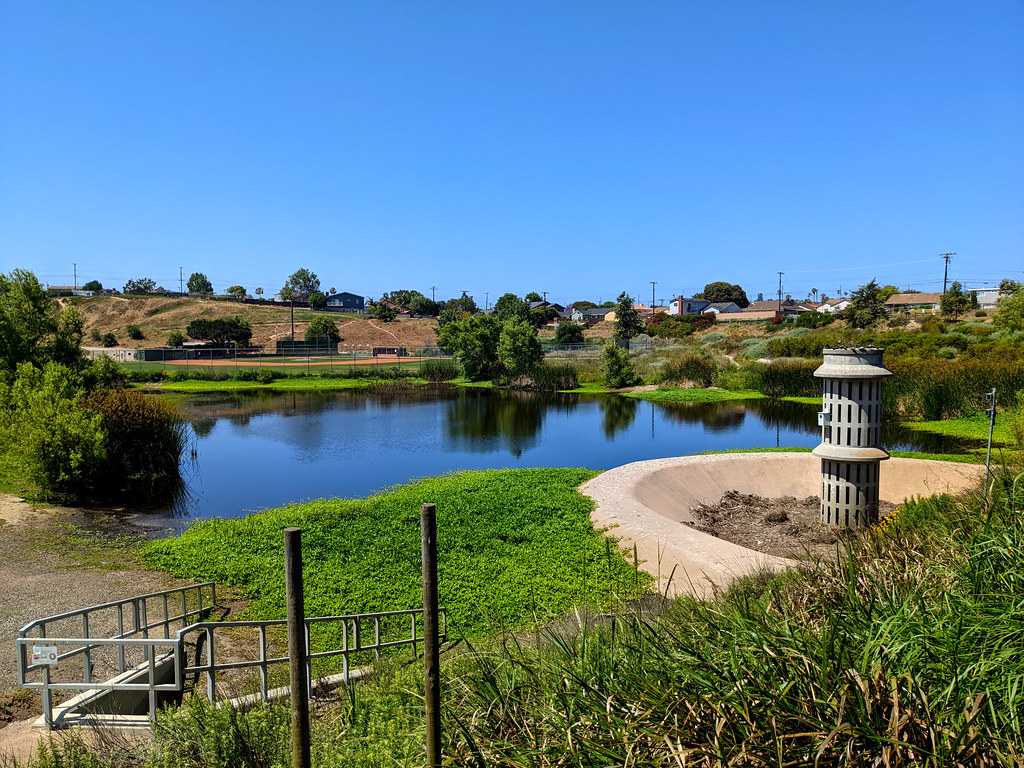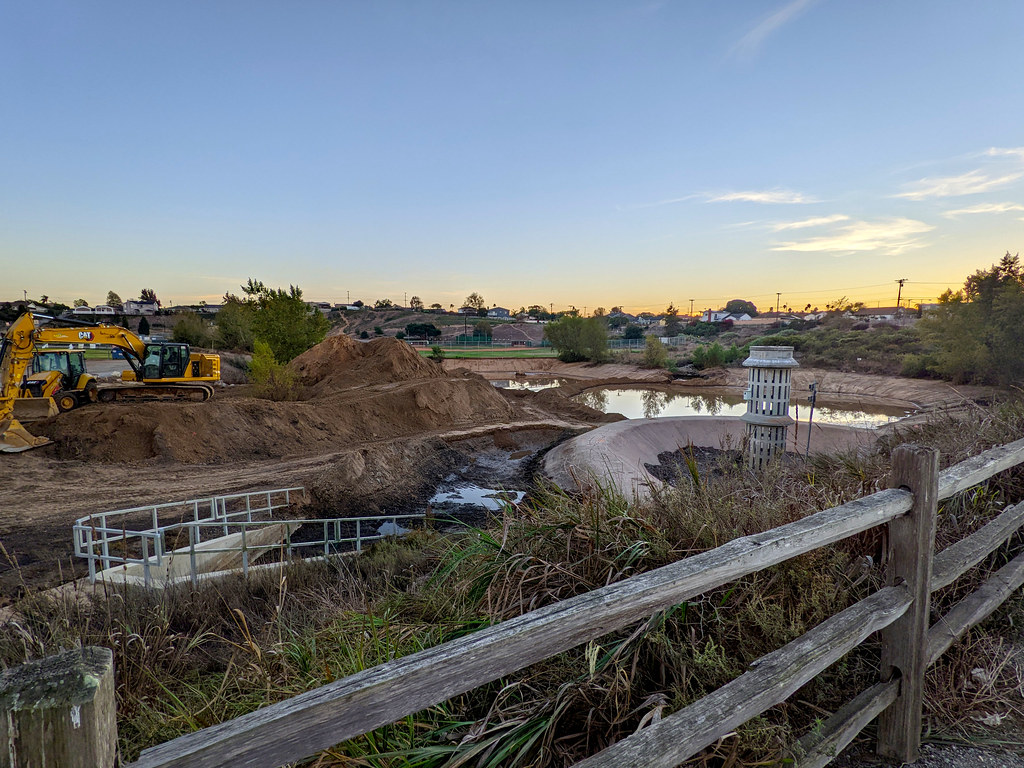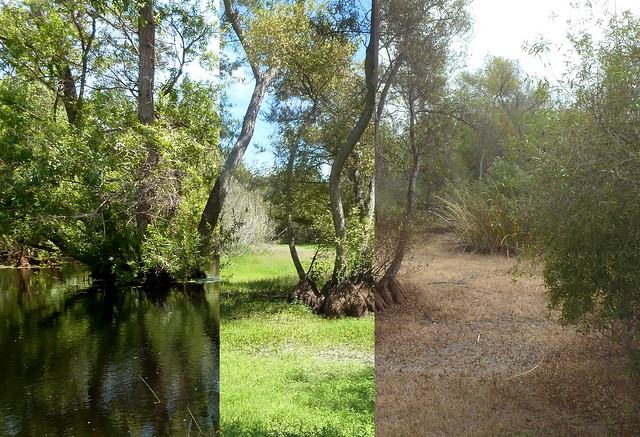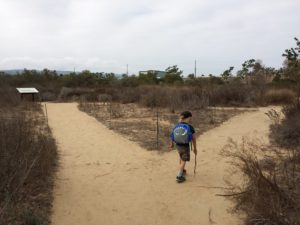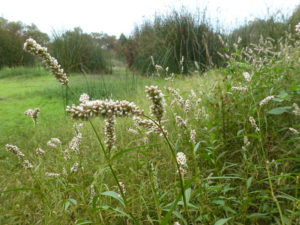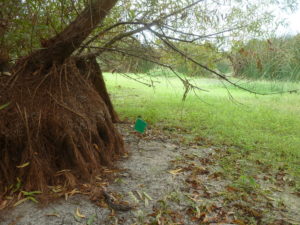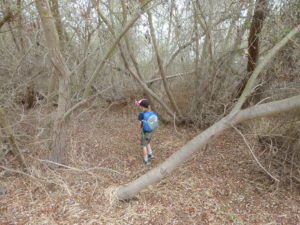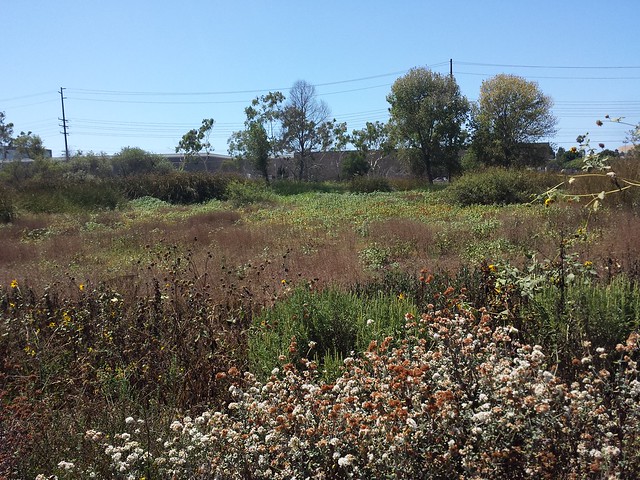The flood control basin has been partly restored for stormwater infiltration and as habitat for native plants and migrating waterfowl, bounded by a city park on one side, baseball fields on the other, and hills all around. The city is currently expanding the basin while the water level is low.
Tag: wetlands
Modular Wetlands?
![[Metal hatch on the ground labeled MODULAR WETLANDS]](https://hyperborea.org/journal/wp-content/uploads/2018/09/modular-wetlands-1024x1024.jpeg)
So this is where you plug in the wetlands? Just open the hatch and connect them?
#confused 😕
Seasons of Madrona Marsh
Last weekend I returned to the Madrona Marsh Preserve to see what our late summer/autumn heat wave had done to the place. The fields of sunflowers I saw in August have gone to seed and dried up, and the pools have continued to retreat. I managed to get a third shot in the same grove as before, where trees grew out of a pool in spring, towered over low ground cover in summer, and now stand alone, waiting for winter rains to flood the grounds again.
The image above is a combination of spring, summer and fall (specifically May, August, and October) views at the same spot.
The higher parts of the preserve are covered with dry scrub, though volunteers have cleared a lot of it out. The broken tree limb I had to walk around in August has been cleared away as well. Deep into the wooded area we did find mud flats teeming with reeds, smaller plants, dragonflies, songbirds and insects. I don’t know if any standing water remains, since we turned back at that point. (Kids have boundless energy, but limited stamina.)
Over on Flickr I have about a dozen photos of the hike, showing the preserve’s current range from dry scrub to muddy grass.
Seasonal Wetlands: Before and After the Summer
Finally put together a before-and-after shot!
On the right: May in Madrona Marsh, after winter and spring rains filled up the low-lying areas of the preserve.
On the left: Late August in the same spot, after summer had dried up the pools. Despite the drought, and helped along by a couple of freak summer storms, the ground is still holding onto enough moisture that the floor of the vernal pool is covered with low greenery instead of dry grass.
I know, it’s always better to put “before” on the left, and I tried it with that layout, but it ended up looking better this way.
Back to the Marsh (what’s left of it)
At the end of August I returned to the Madrona Marsh Preserve. It’s a fragment of the seasonal wetlands that used to dot the western edge of the Los Angeles basin, just inland from the coastal hills. These low-lying areas collect water during winter and spring rains, then slowly dry out over the summer, only to fill up and become wetlands again the next year.
On a hike in May I found extensive pools and lots of wading birds. Trees kept some parts shady. Scrub prevailed on the higher ground.
Returning at the end of summer, I found the area near the entrance looked about the same as it had before. As I got closer to the low-lying areas, the scrub seemed to have grown thicker. The pools were gone, but the ground where they’d been was clearly still wetter than the area around it. Plants were greener, and in some places it was still muddy.
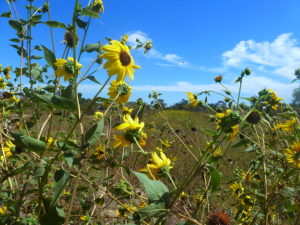 There were also fields and fields of wild sunflowers. Most of the places that had been mud flats in spring were now covered with sunflowers. Some areas I’d walked to get closer to the pools were completely blocked. I saw dragonflies, and in a few places I found bushes that were absolutely covered with clumps of foam from some sort of bug.
There were also fields and fields of wild sunflowers. Most of the places that had been mud flats in spring were now covered with sunflowers. Some areas I’d walked to get closer to the pools were completely blocked. I saw dragonflies, and in a few places I found bushes that were absolutely covered with clumps of foam from some sort of bug.
Once I reached the tree-covered area, I walked a trail that had been underwater the last time. It seemed to end abruptly until I realized that a tree limb had snapped and fallen to block the trail. It was still attached about ten feet up.
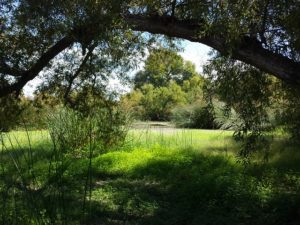 In the lowest, shadiest part of the preserve, I did find pools that were still wet, and still host to a few wading birds. I wonder if I return in, say, November, will they have dried out as well, or is there a last bastion that stays flooded all year (at least in years with normal rainfall)?
In the lowest, shadiest part of the preserve, I did find pools that were still wet, and still host to a few wading birds. I wonder if I return in, say, November, will they have dried out as well, or is there a last bastion that stays flooded all year (at least in years with normal rainfall)?
I didn’t recognize the spot at first, or I would have tried to frame it the same way, but I did manage to get shots of the same clump of trees flooded in spring and surrounded by dry land and low plants in summer. It was interesting to see the spreading roots without the water.
You can view the full Spring hike (23 photos) and the full Summer hike (8 photos) on Flickr.
